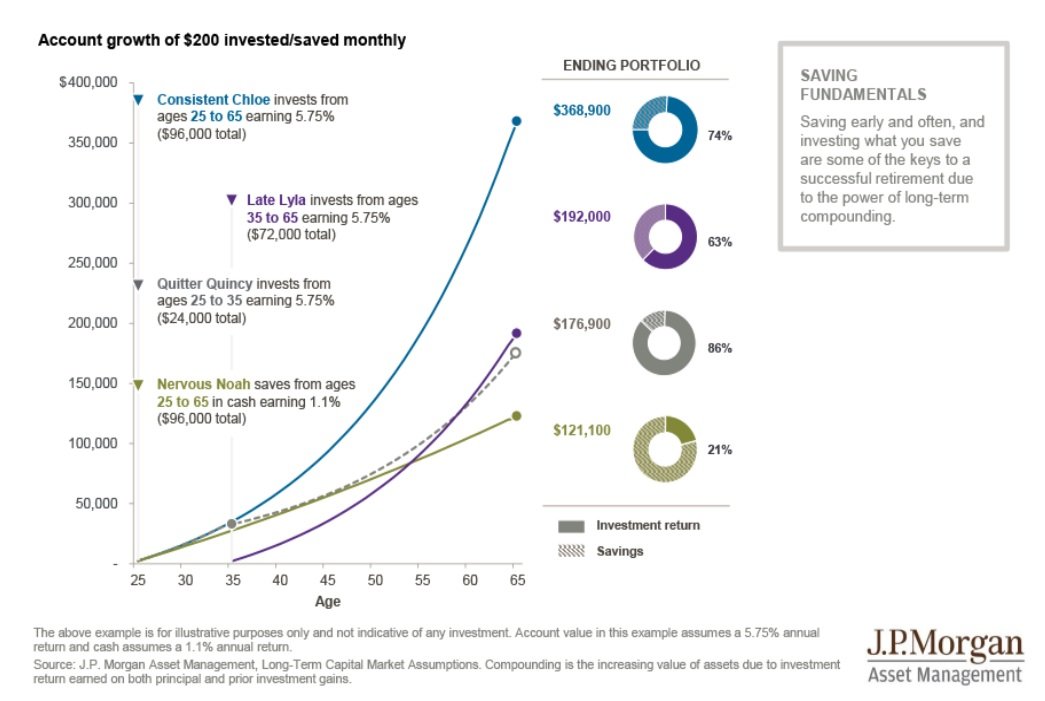 Contributed by: Robert Ingram, CFP®
Contributed by: Robert Ingram, CFP®
If you are planning your retirement savings goals for the New Year, you may be surprised by how much you can contribute to your retirement accounts in 2023. The IRS has increased the annual contribution limits for employer retirement plans and IRA accounts, as well as the eligibility limits for some contributions. With inflation in 2022 at a 40-year high, many of these increases are also some of the largest in decades. Here are some adjustments worth noting for 2023.
Employe retirement plan contribution limits (401k, 403b, most 457 plans, and Thrift Saving):
$22,500 annual employee elective deferral contribution limit (increased from $20,500 in 2022)
$7,500 extra "catch-up" contribution if over the age of 50 (increased from $6,500 in 2022)
Total amount that can be contributed to a defined contribution plan, including all contribution types (e.g., employee deferrals, employer matching, and profit sharing), is $66,000 or $73,500 if over the age of 50 (increased from $61,000 or $67,500 for age 50+ in 2022)
Traditional, Roth, SIMPLE IRA contribution limits:
Traditional and Roth IRA
$6,500 annual contribution limit (increased from $6,000 in 2022)
$1,000 "catch-up" contribution if over the age of 50 remains the same
Note: The annual limit applies to any combination of Traditional IRA and Roth IRA contributions. (i.e., You would not be able to contribute up the maximum to a Traditional IRA and up the maximum to a Roth IRA.)
SIMPLE IRA
$15,500 annual contribution limit (increased from $14,000 in 2022)
$3,500 "catch-up" contribution if over the age of 50 (increased from $3,000 in 2022)
Traditional IRA deductibility (income limits):
Contributions to a Traditional IRA may be tax deductible depending on your tax filing status, whether a retirement plan covers you (or your spouse) through an employer, and your Modified Adjusted Gross Income (MAGI). The amount of a Traditional IRA contribution that is deductible is reduced ("phased out") as your MAGI approaches the upper limits of the phase-out range. For example,
Single
Covered under a plan
Partial deduction phase-out begins at $73,000 up to $83,000 (then above this no deduction) compared to 2022 (phase-out: $68,000 to $78,000)
Married filing jointly
Spouse contributing to the IRA is covered under a plan
Phase-out begins at $116,000 to $136,000 compared to 2022 (phase-out: $109,000 to $129,000)
Spouse contributing is not covered by a plan, but other spouse is covered under plan
Phase-out begins at $218,000 to $228,000 compared to 2022 (phase-out: $204,000 to $214,000)
Roth IRA contribution (income limits):
Just like making deductible contributions to a Traditional IRA, being eligible to contribute to a Roth IRA depends on your tax filing status and income. Your allowable contribution is reduced ("phased out") as your MAGI approaches the upper limits of the phase-out range. For 2023 the limits are as follows:
Single
Partial contribution phase-out begins at $138,000 to $153,000 compared to 2022 (phase-out: $129,000 to $144,000)
Married filing jointly
Phase-out begins at $198,000 to $208,000 compared to 2020 (phase-out: $196,000 to $206,000)
You can contribute up to the maximum if your MAGI is below the phase-out floor. Above the phase-out ceiling, you are ineligible for any partial contribution.
Eligibility for contributions to retirement accounts like Roth IRA accounts also requires you to have earned income. If you have no earned income or your total MAGI makes you ineligible for regular annual Roth IRA contributions, using different Roth IRA Conversion strategies could be a way to move money into a Roth in some situations.
As we start 2023, keep these updated figures on your radar when reviewing your retirement savings opportunities and updating your financial plan. As always, if you have any questions about these changes, don't hesitate to contact our team!
Have a happy and healthy holiday season and a great start to the New Year!
Robert Ingram, CFP®, is a CERTIFIED FINANCIAL PLANNER™ professional at Center for Financial Planning, Inc.® With more than 15 years of industry experience, he is a trusted source for local media outlets and frequent contributor to The Center’s “Money Centered” blog.
Any opinions are those of Bob Ingram, CFP® and not necessarily those of Raymond James. Securities offered through Raymond James Financial Services, Inc., member FINRA/SIPC. Investment advisory services are offered through Raymond James Financial Services Advisors, Inc.
The information contained in this report does not purport to be a complete description of the securities, markets, or developments referred to in this material. The information has been obtained from sources considered to be reliable, but we do not guarantee that the foregoing material is accurate or complete. Raymond James does not provide tax or legal services. Please discuss these matters with the appropriate professional. Conversions from IRA to Roth may be subject to its own five-year holding period. Unless certain criteria are met, Roth IRA owners must be 59½ or older and have held the IRA for five years before tax-free withdrawals of contributions along with any earnings are permitted. Converting a traditional IRA into a Roth IRA has tax implications. Investors should consult a tax advisor before deciding to do a conversion.

























